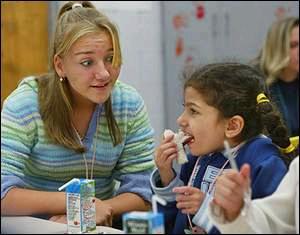
When my world traveling son arrived home last week, I asked him if he missed his travels which have been put to rest for a while. He said yes and no. He said while he was traveling how grateful he was to be an American, to have that American passport in his pocket. He said he was grateful to be able to come home to a place he knew he and his family would be safe.
In this country we have so much to be thankful for.
Russian doctor pleads for better quake child care
CRISIS PROFILE: Death and displacement in Chechnya
MORE By Suzanna Koster
ISLAMABAD, Oct 21 (Reuters) – The septuagenarian Russian doctor raged against the world as he emerged from the operating theatre of a Pakistani hospital where he’s worked tirelessly for days to save the lives of earthquake victims.
Slumped on a bench in a corridor as a young boy was wheeled into the theatre sobbing, Leonid Roshal asked why there weren’t enough doctors to treat the children.
“We don’t have a good global system to help children during disasters,” said the 72-year-old paediatrician, who has made a mission over the past two decades of getting to disasters as fast as he can.
Roshal has been there for the victims of earthquakes in Armenia, Georgia, Egypt, Japan, Afghanistan and India. He also mediated with Chechen separatist rebels who held an audience hostage at a Moscow theatre in 2002.
The earthquake struck Pakistan on Oct. 8 and Roshal and his team of seven doctors arrived just two days later.
“We need more special paediatrician teams that can quickly arrive in times of need,” Roshal pleaded.
“Everyone in this world only thinks about the first two stages of disaster — getting the people out of the houses and giving them first aid — but nobody helps out with operations.
“If you don’t give good hospital care the child will die, no matter how good the first aid,” says Roshal, who heads the Moscow Children’s Clinical and Research Institute of Emergency Surgery and Trauma.
British and Korean teams have joined the Russians helping local surgeons at the Pakistani Institute for Medical Sciences, the Islamabad hospital where hundreds of children evacuated from the most stricken areas have been sent for treatment.
The pressure on the hospital has been enormous, but after initial chaos some sense of order has returned, although wards are crammed and patients have spilled out into corridors.
CHILDREN HIT HARD
About 1,200 children have been operated on, a large number of the procedures handled by Russian surgeons.
The ones in a stable condition are sent to make-shift hospitals at a sports complex and a hostel.
When the quake struck, classrooms were full, while very young children were mostly at home with their mothers and women relatives, in keeping with the traditional values of the conservative Muslim communities in North West Frontier Province and Pakistani Kashmir.
Consequently, casualties among children were probably disproportionately high in a country where under-18s make up close to half the population.
The death toll from the quake is close to 50,000, while estimates of the injured are put at 74,000.
Both figures are expected to rise, as many isolated villages in the Himalayan foothills have been cut off by landslides and have still to be assessed, let alone reached.
With winter closing in, the United Nations Children’s Fund has warned that 10,000 more children could die unless they get food and shelter soon.
Many casualties’ injuries became infected because they were unable to get medical attention for days, leaving doctors little choice other than to amputate limbs to save lives.
Roshal agonised over just such a dilemma during his brief break from the operating table.
The feet of a six-year-old girl whose legs were crushed have turned black due to lack of blood circulation.
Amputation appeared inevitable, but the girl’s father begged him, saying her life would not be worth living without her feet.
“I am still trying to find another way for her,” he sighed. “I only decide to amputate if I am 100 percent sure it is impossible to do it another way.”









